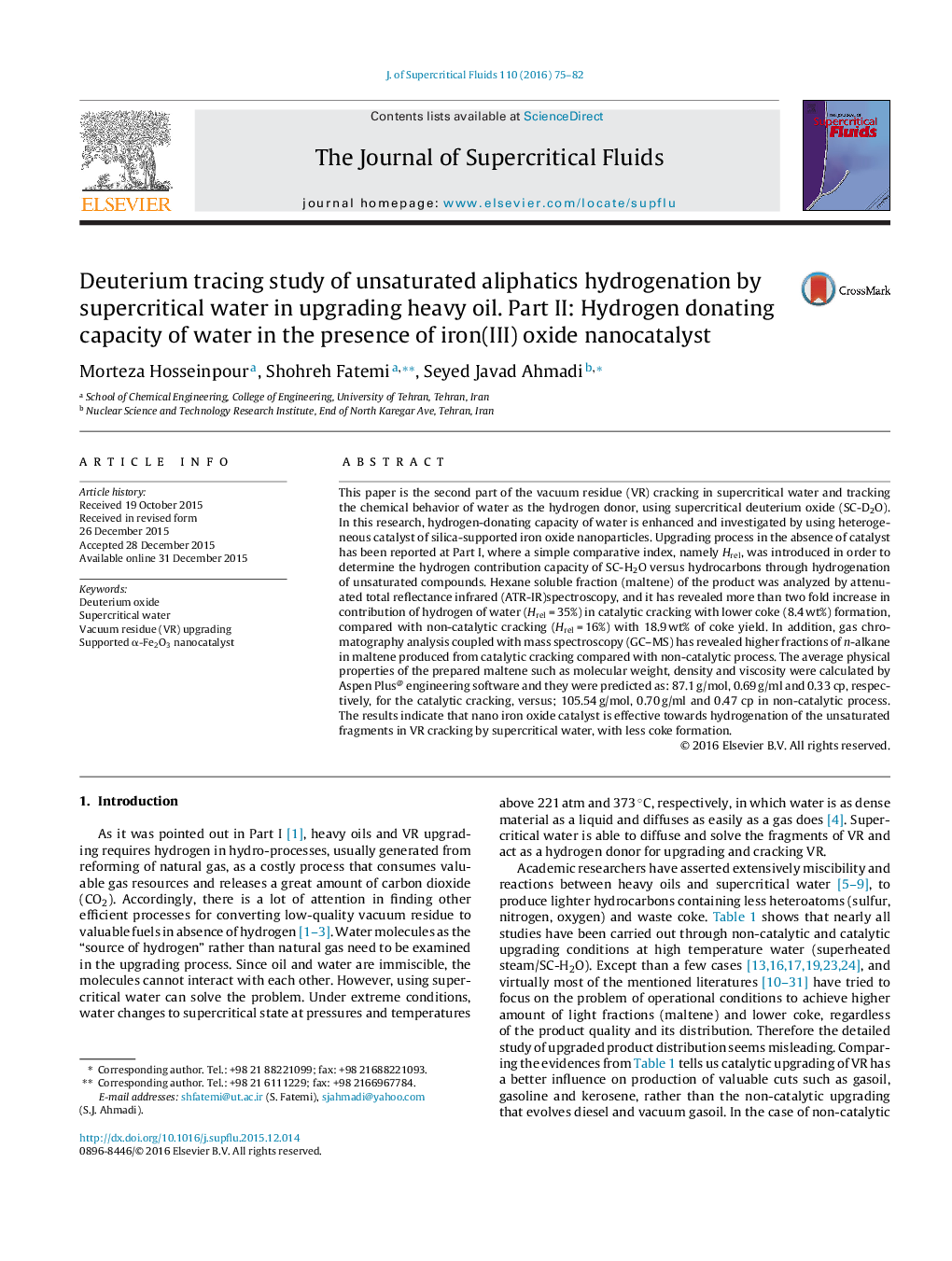| کد مقاله | کد نشریه | سال انتشار | مقاله انگلیسی | نسخه تمام متن |
|---|---|---|---|---|
| 230020 | 1427367 | 2016 | 8 صفحه PDF | دانلود رایگان |

• Hydrogen-donor capability of SC-H2O in presence of iron oxide, by isotope labeling technique.
• Significant increase in Hrel as index of hydrogenation by water vs. hydrocarbon in presence of catalyst.
• Considerable improvement in quality of light products (maltene) in catalytic VR upgrading.
This paper is the second part of the vacuum residue (VR) cracking in supercritical water and tracking the chemical behavior of water as the hydrogen donor, using supercritical deuterium oxide (SC-D2O). In this research, hydrogen-donating capacity of water is enhanced and investigated by using heterogeneous catalyst of silica-supported iron oxide nanoparticles. Upgrading process in the absence of catalyst has been reported at Part I, where a simple comparative index, namely Hrel, was introduced in order to determine the hydrogen contribution capacity of SC-H2O versus hydrocarbons through hydrogenation of unsaturated compounds. Hexane soluble fraction (maltene) of the product was analyzed by attenuated total reflectance infrared (ATR-IR)spectroscopy, and it has revealed more than two fold increase in contribution of hydrogen of water (Hrel = 35%) in catalytic cracking with lower coke (8.4 wt%) formation, compared with non-catalytic cracking (Hrel = 16%) with 18.9 wt% of coke yield. In addition, gas chromatography analysis coupled with mass spectroscopy (GC–MS) has revealed higher fractions of n-alkane in maltene produced from catalytic cracking compared with non-catalytic process. The average physical properties of the prepared maltene such as molecular weight, density and viscosity were calculated by Aspen Plus@ engineering software and they were predicted as: 87.1 g/mol, 0.69 g/ml and 0.33 cp, respectively, for the catalytic cracking, versus; 105.54 g/mol, 0.70 g/ml and 0.47 cp in non-catalytic process. The results indicate that nano iron oxide catalyst is effective towards hydrogenation of the unsaturated fragments in VR cracking by supercritical water, with less coke formation.
Figure optionsDownload as PowerPoint slide
Journal: The Journal of Supercritical Fluids - Volume 110, April 2016, Pages 75–82